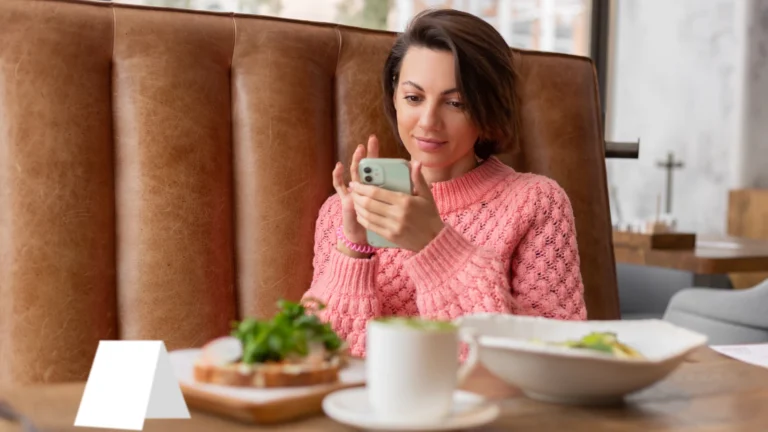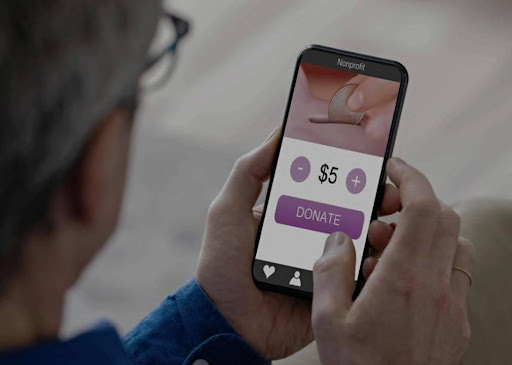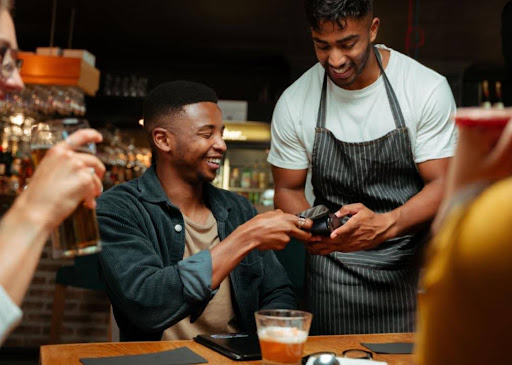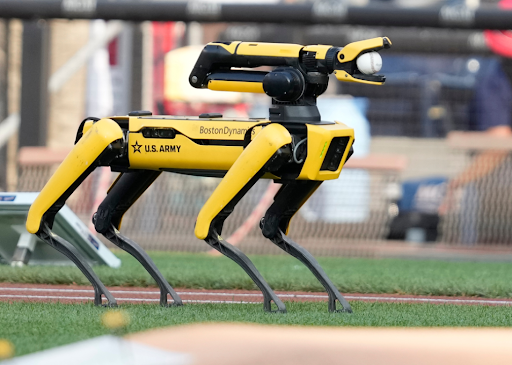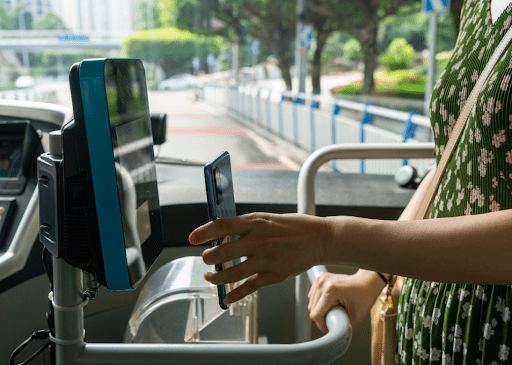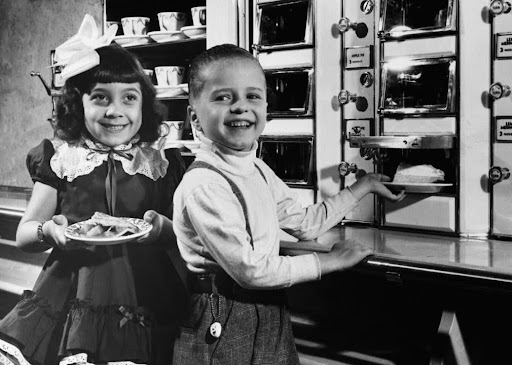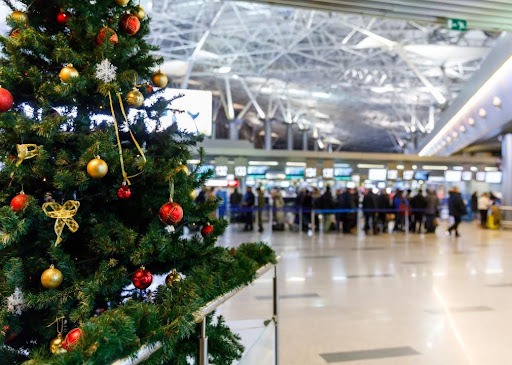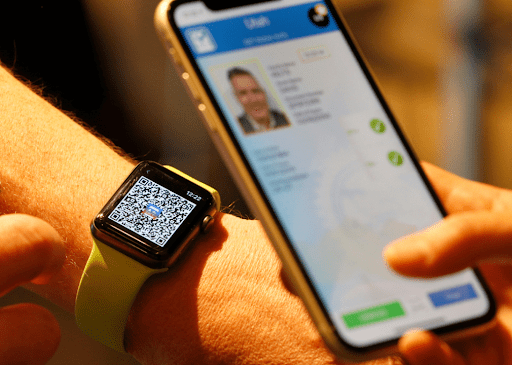Restaurants adopted QR Code menus to simplify ordering and reduce contact. Guests scan, browse, and order without waiting for staff, a digital convenience that quickly became standard.
Yet for many restaurants, the digital transformation stopped there. The QR Code works, but it only solves one problem: viewing a menu. Guests still flag down servers to pay. Allergy information remains unclear. Promotions go unnoticed on printed posters.
The issue isn’t technology. It’s imagination.
QR Codes can do far more than display menus. They can process payments, collect feedback, manage loyalty programs, and even enhance the dining experience through interactive storytelling, all without printing a single new code.
According to Uniqode’s State of QR Codes 2025, 52% of consumers encounter QR Codes most often in restaurants. The audience is already trained to scan; what’s missing is strategic use.
This article explores sixteen ways restaurants can move beyond menu QR Codes to create faster operations, stronger trust, and more engaging guest experiences.
Table of contents
- 16 must-know QR Code uses for restaurants
- QR Code use cases at a glance
- Future-proof your restaurant with advanced QR Code use cases
16 must-know QR Code uses for restaurants
QR Codes have evolved into versatile tools that streamline restaurant operations and enhance the guest experience. Their impact extends across six core areas: payments, trust, dining experience, loyalty, marketing, and operations. Some applications reduce costs and waiting time, while others build stronger customer relationships or automate daily tasks.
Streamlining payments and table turnover

Running a restaurant smoothly isn’t just about serving great food; it’s about keeping your tables moving efficiently. One of the biggest slowdowns happens after the meal when guests are ready to pay or split the bill.
QR Codes can simplify both, making checkout and bill-splitting instant and seamless. The following sections show how digital payments and shared checkouts are helping restaurants save time, reduce friction, and boost table turnover.
1. Contactless payments
In many restaurants, checkout is still the slowest part of service. Guests signal for the bill, wait for a card machine, and payment drags on while new tables line up at the door.
QR-enabled payments solve this. A code placed on the table, bill, or receipt lets guests pay instantly through their phones. They scan, select a payment method, and close the bill, no staff needed.
Why it matters:
- Faster checkout increases table turnover during peak hours.
- Fewer disputes due to digital confirmations
- Servers focus on hospitality instead of handling transactions
Example: McDonald’s China pioneered this approach. Customers scan QR Codes to pay via Alipay or WeChat Pay, often completing a transaction in just seconds. Today, over 90% of its transactions occur through mobile or self-service kiosks. Over 6,000 stores feature smart pick-up lockers, allowing contactless retrieval through QR Code scans.
Many restaurants now go a step further by using dynamic QR Codes that link directly to digital checkout pages. This method speeds up payments and lets you update payment providers anytime without reprinting QR Codes.
2. Splitting bills
You’ve watched it happen dozens of times. A table finishes their meal, everyone’s ready to leave, and then someone says, “Let’s split this.” What follows is five minutes of your server standing there while the group argues over percentages, pulls out phone calculators, and tries to figure out who had the extra appetizer. Meanwhile, you’ve got a line at the door waiting for a table.
QR Code-based bill splitting eliminates this entire scene. Guests simply scan the table’s QR Code, view the itemized bill and each person pays their share directly from their phone. The POS closes automatically when all payments complete.
Why it matters:
- No manual re-splits or awkward math
- Time saved for servers, who no longer need to process multiple cards
- Creates a smoother, frustration-free checkout for groups
Example: Platforms like Posytude POS have already made this easy to implement. Their QR Code-based bill-splitting feature lets guests scan a single code at the table, select their items, and pay using their preferred method, instantly reflecting payments in the restaurant’s POS.
Building trust, safety, and transparency

In modern dining, transparency is no longer optional; it defines credibility.
Diners want to know where ingredients come from, how safely food is prepared, and whether sustainability claims are genuine sustainability claims are real. QR Codes let restaurants replace assumptions with visible proof, turning trust into a measurable part of the guest experience.
3. Farm-to-table transparency
Unless you back it up, the “farm fresh” on your menu is just a word for diners. Without traceability, those claims lose meaning. With QR Codes, you can give guests the full story. A small QR Code beside each dish can open a digital page showing where produce was sourced, which fishery supplied the protein, or the date ingredients arrived.
Why it matters:
- Shows proof of freshness and ethical sourcing instead of vague claims.
- Appeals to health-conscious diners who value ethically sourced ingredients.
- Creates a premium perception around dishes tied to traceable farms.
⚡Pro Tip: You can also link dishes to a “Uniqode Linkpage with farm maps, supplier details, and certifications to turn claims into proof.
4. Allergen and dietary information
Allergen management errors are among the most expensive and damaging mistakes in food service. QR Code menus minimize that risk by letting guests filter dishes by allergens or dietary preferences.
Instead of relying on staff memory, diners toggle “nut-free,” “gluten-free,” or “vegan,” and the digital menu instantly adjusts to show safe options, ensuring both compliance and guest confidence.
Why it matters:
- Prevents costly and dangerous allergen errors
- Reduces staff training burden and dependency on memory
- Improves guest trust, leading to repeat visits
5. Hygiene certifications
A clean-looking dining room doesn’t reveal what’s happening in the kitchen, and a framed certificate on the wall usually goes unnoticed. This creates a gap between what the restaurant knows (its compliance record) and what the diner perceives (uncertainty).
You can make that information transparent by adding QR Codes at the entrance, on menus, or table tents. A quick scan can instantly display inspection scores, food safety audits, and even daily cleaning logs.
Why it matters:
- Instantly proves hygiene standards rather than asking diners to trust blindly.
- Differentiates you from competitors who hide inspection results.
- Reassures tourists and new diners unfamiliar with local food standards.
6. Sustainability footprint
“Eco-friendly” has become an overused claim in food service. Many restaurants talk about recycling or sustainable packaging, but very few back it up with data.
With QR Codes, you can bring your sustainability stories to life. Show how much packaging waste you’ve reduced this month, whether your takeout containers are compostable, and how much carbon you’ve offset through local sourcing.
Why it matters:
- Appeals directly to eco-conscious Millennials and Gen Z, who prefer brands aligned with their values.
- Turns sustainability into a selling point instead of a vague CSR claim.
- Differentiates premium brands willing to show their progress transparently.
Enhancing the dining experience
Menus can do more than list items. QR Codes add a digital layer of storytelling and interaction, helping guests connect with the food and brand on an emotional and educational level.
Instead of static menus, guests can explore chef insights, visual previews, curated pairings, and fun extras, turning a simple meal into an experience guests remember.
7. Chef’s stories or dish origins
Signature dishes often have stories: a tradition, a personal memory, or a regional influence. QR Codes can bring those stories directly to the table. A QR Code beside a dish can play a short chef video or give diners a behind-the-scenes look at how each dish is created and the inspiration for it. This gives diners a behind-the-scenes look at how each dish is created and the inspiration for it.
Why it matters:
- Elevates premium dishes by attaching a narrative
- Builds a stronger brand identity through storytelling
Example: A Florida-based restaurant took this idea further by adding QR Codes that play short chef-led videos to reveal dish inspiration and preparation process, increasing social engagement and repeat visits.
8. AR dish previews
Restaurants can use AR technology to elevate the guest experience. By adding a QR Code beside each dish, diners can view 3D or AR models on their phones, showing portion sizes, plating, and presentation before ordering.
Why it matters:
- Reduces order errors and post-meal complaints
- Encourages guests to try premium or unfamiliar dishes
- Enhances the perceived quality of your menu
Example: Bareburger integrated QR-based dish previews, improving order accuracy and guest engagement across multiple locations.
9. Wine and food pairing guides
Wine lists often overwhelm guests, leading to slower decisions and missed upselling opportunities. With QR Codes, you can automate suggestions like linking wines to complementary dishes, tasting notes, and serving tips.
Why it matters:
- Upsells wine and beverages naturally, with zero pressure
- Reduces decision fatigue for guests
- Positions you as knowledgeable and guest-friendly
Example: Upscale bistros use QR-linked pairing guides that match each entrée with wines in stock, allowing real-time updates when vintages change.
10. Interactive kids’ activities
Keeping young diners entertained can make or break a family’s dining experience.
By adding a QR Code to your kids’ menu, you can instantly offer interactive coloring sheets, mini-games, or AR mascots that come to life at the table. It’s a simple way to create a calmer environment and keep families coming back.
Why it matters:
- Keeps kids engaged, allowing your staff to focus on service instead of managing table distractions.
- Makes dining easier for parents, leading to higher satisfaction and longer visits.
- Builds goodwill with families, turning them into loyal, repeat customers.
Driving loyalty, repeat visits, and upsells

Retaining a customer is cheaper than acquiring a new one. QR Codes turn routine touchpoints like receipts, table tents, and takeout packaging into gateways for loyalty enrollment and exclusive experiences.
11. Loyalty program enrollment
Paper sign-up forms and app downloads often discourage guests from joining your loyalty program. A simple QR Code on the bill or receipt removes that friction; guests scan once, enroll instantly, and start earning rewards on the spot.
Why it matters:
- Removes barriers to sign-ups and speeds adoption
- Encourages repeat visits with points and perks
- Turns casual diners into engaged brand advocates
⚡Pro Tip:Use Uniqode Forms to let guests join your loyalty programs instantly at the table. This means there are no app downloads required or paper forms to manage. You can instantly capture guest data for re-engagement, converting first-timers into regulars from their very first visit.
Example: Starbucks has perfected this model through its digital rewards program, turning casual visitors into loyal advocates who keep returning for points and perks. You can achieve this by integrating QR Code-based sign-ups that capture guest data automatically and reward them for every visit.
12. VIP / exclusive access
Loyalty isn’t only about points, it’s about access. Every restaurant has regulars who want something more than the average experience. With QR Codes, you can offer exclusive access: invitations to chef’s table events, pre-launch tastings, or private wine pairings. A quick scan unlocks access, making regulars feel like insiders.
Why it matters:
- Rewards high-value customers with special experiences.
- Strengthens brand affinity by offering insider perks.
- Creates a sense of prestige that encourages repeat dining.
Example: Upscale restaurants use QR-based RSVP systems to fill chef’s table events within hours, creating exclusivity without manual outreach.
Boosting marketing and word-of-mouth promotion

Great food gets people talking, but QR Codes can amplify that buzz beyond your restaurant walls. They convert diners into active promoters by making it easier for guests to leave feedback, share moments, celebrate staff, and discover promotions.
13. Feedback collection
You send feedback requests days after the meal; by then, guests have forgotten details and moved on.
A QR Code on the bill or table tent makes feedback instant. Guests scan, answer a few quick questions, and share impressions before walking out.
Why it matters:
- Collects fresher, more accurate guest impressions.
- Helps you spot issues before negative reviews go public.
- Empowers your managers to act on feedback immediately.
Operational backend efficiency

QR Codes aren’t just guest-facing tools; they can transform operations behind the scenes.
From updating menus in real time to streamlining hiring and managing supplier chains, QR Codes cut costs, save time, and reduce errors in your restaurant’s daily grind.
14. Dynamic menu updates
You’ve seen it happen, the look of disappointment when a guest learns their favorite dish just sold out. That moment doesn’t just cost you a sale; it dampens the dining experience. You can avoid that entirely with QR Code menus.
Instead of reprinting menus or relying on servers to spread the word, you can update item availability in real time. Whether you’ve just sold your last portion of the special or added a new dish mid-service, a few clicks on your dashboard instantly refresh every digital menu in the restaurant.
Why it matters:
- Prevents guest disappointment and frustration.
- Reduces waste from orders placed for unavailable items.
- Keeps menus fresh and accurate every time.
💡 Did you know?
Uniqode’s restaurant menu QR Codes come with Smart Rules, meaning the same QR Code can show different menus based on time or location.
→ Breakfast vs. lunch vs. dinner menus
→ Happy hour menus on Fridays
→ Special menus at airport locations
Your multi-language QR Code menu can automatically appear in the guest’s preferred language based on their phone settings or the location from which they scan! All you got to do is avail our Smart Rules option.
→ Faster ordering
→ Fewer errors
→ Better hospitality and accessibility
15. Job applications and recruitment
Finding good staff is tough, and most recruitment posters barely get a glance.
Adding a QR Code to your storefront, menu, or takeaway packaging lets you turn casual diners into potential hires. One quick scan takes them to your careers page or an application form they can fill out on their phone, with no emails or extra steps.
Even major brands are getting creative with this. McDonald’s, for instance, launched its “Reqruitment” campaign in partnership with Publicis Groupe, using QR Codes on packaging, billboards, and uniforms to connect directly to job listings and application forms. The idea was simple but brilliant—meet candidates where they already are.
Why it matters:
- Simplifies applications with instant mobile forms.
- Reaches potential hires among diners themselves.
- Speeds up the hiring pipeline in a tight labor market.
16. Supplier and inventory management
QR Codes aren’t just for guest-facing experiences. They can quietly power your back-of-house operations too. From tracking deliveries to monitoring stock levels, QR Codes make inventory management faster and more transparent.
Here’s how it works in practice: Restaurants can label ingredient crates, storage shelves, or packaging with dynamic QR Codes linked to supplier data, batch numbers, and expiry dates. When staff scan a code, it automatically updates the restaurant’s POS or inventory system in real time, helping chefs and managers see what’s running low and when to reorder.
Platforms such as MarketMan already support this kind of integration. They allow you to connect scanned QR Codes to ingredient databases, purchase orders, and vendor profiles, meaning you can track everything from when the lettuce arrived to when it’s due to expire.
Why it matters:
- Cuts manual errors in inventory tracking.
- Improves communication with suppliers.
- Keeps kitchens stocked without over-ordering or shortages.
QR Code use cases at a glance
| Category | QR Code use case | Key benefit |
| 💳 Payments & Table Turnover | Contactless payments | Guests pay instantly; speeds up table turnover. |
| Splitting bills | Groups scan one QR Code; split or pay individually. | |
| 🛡️ Trust & Safety | Farm-to-table transparency | Show farm origins & supplier stories. |
| Allergen & dietary info | Filter items by allergens/diets easily. | |
| Hygiene certifications | Display inspections & cleaning logs via QR Codes. | |
| Sustainability footprint | Highlight eco metrics, waste reduction, and carbon offsets. | |
| ✨ Dining Experience | Chef’s stories / dish origins | Scan to watch chef videos or read about dishes. |
| AR dish previews | 3D/AR view of portions & presentation. | |
| Wine & food pairing guides | Scan for pairings & tasting notes. | |
| Interactive kids’ activities | Games, coloring sheets, or AR mascots via QR Codes. | |
| 🔄 Loyalty & Repeat Visits | Loyalty program enrollment | Join the rewards program instantly via QR Code. |
| VIP / exclusive access | Unlock insider perks or event invites. | |
| 📣 Marketing & Word-of-Mouth | Feedback collection | Collect real-time reviews; showcase staff. |
| ⚙️ Operations | Dynamic menu updates | Update sold-out items or new dishes instantly. |
| Job applications & recruitment | QR Code links to careers pages. | |
| Supplier & inventory management | Track stock, expiry, and deliveries via QR Code-labeled crates. |

Future-proof your restaurant with advanced QR Code use cases
QR Codes have come a long way from being just digital menus. They’ve become the secret ingredient behind smoother checkouts, smarter marketing, and happier guests. Moving beyond menu QR Codes isn’t just a nice-to-have anymore; it’s how modern restaurants stay sharp (and full).
You don’t need to dive into all 16 ideas headfirst. Start where it makes the biggest splash. Maybe it’s adding contactless payments to turn tables faster, allergen filters to earn diners’ trust, or loyalty QR Codes that keep regulars coming back for seconds. Test, tweak, repeat. The best part about QR Codes is how quickly you can experiment.
And with Uniqode, you’ve got all your codes, campaigns, and insights in one place. No spreadsheets. No guesswork. Just one dashboard to see what’s cooking, what’s working, and what deserves a second serving.
Sukanya is a Content Marketer at Uniqode and a former journalist who fuses newsroom curiosity with SEO-savvy storytelling to help brands grow online. She’s on a mission to demystify digital business cards, digging deep into data, trends, and user behavior to spotlight how they transform how we network and generate leads. Her content doesn’t just inform—it equips. Outside the digital realm, she’s either rescuing animals, getting lost in a plot twist, whipping up kitchen experiments, or chasing stories worth telling.
Related Posts
14 day free trial of the QR platform







